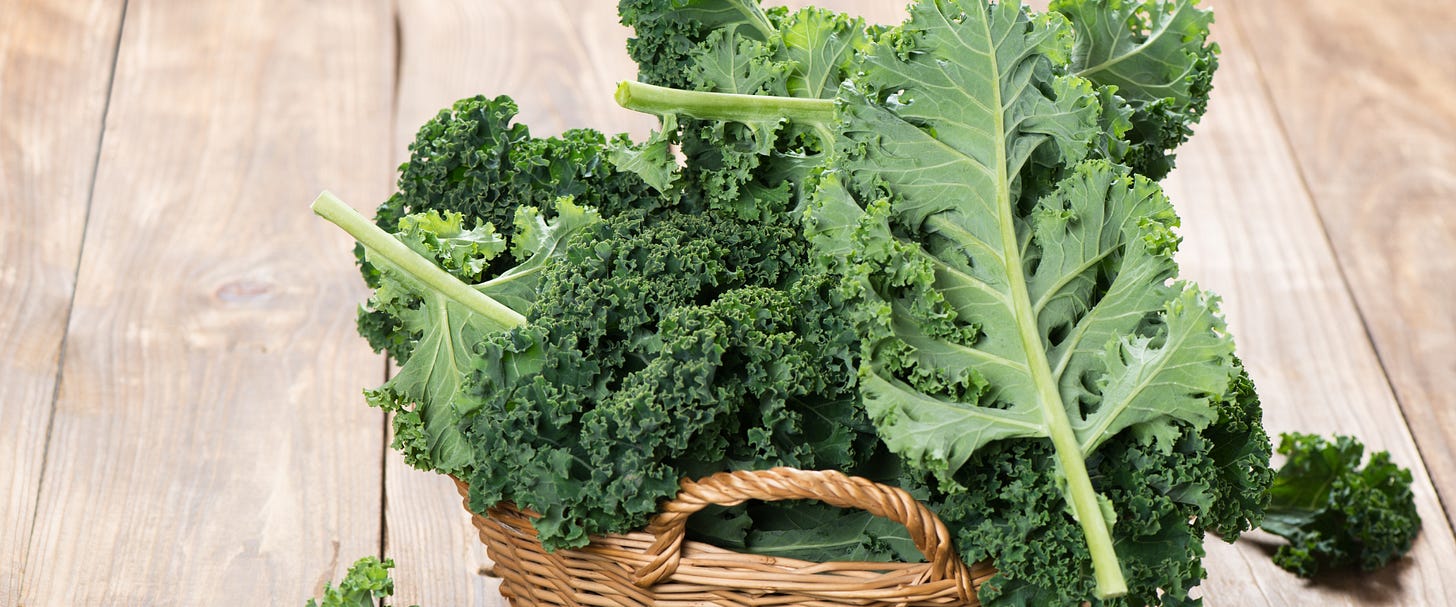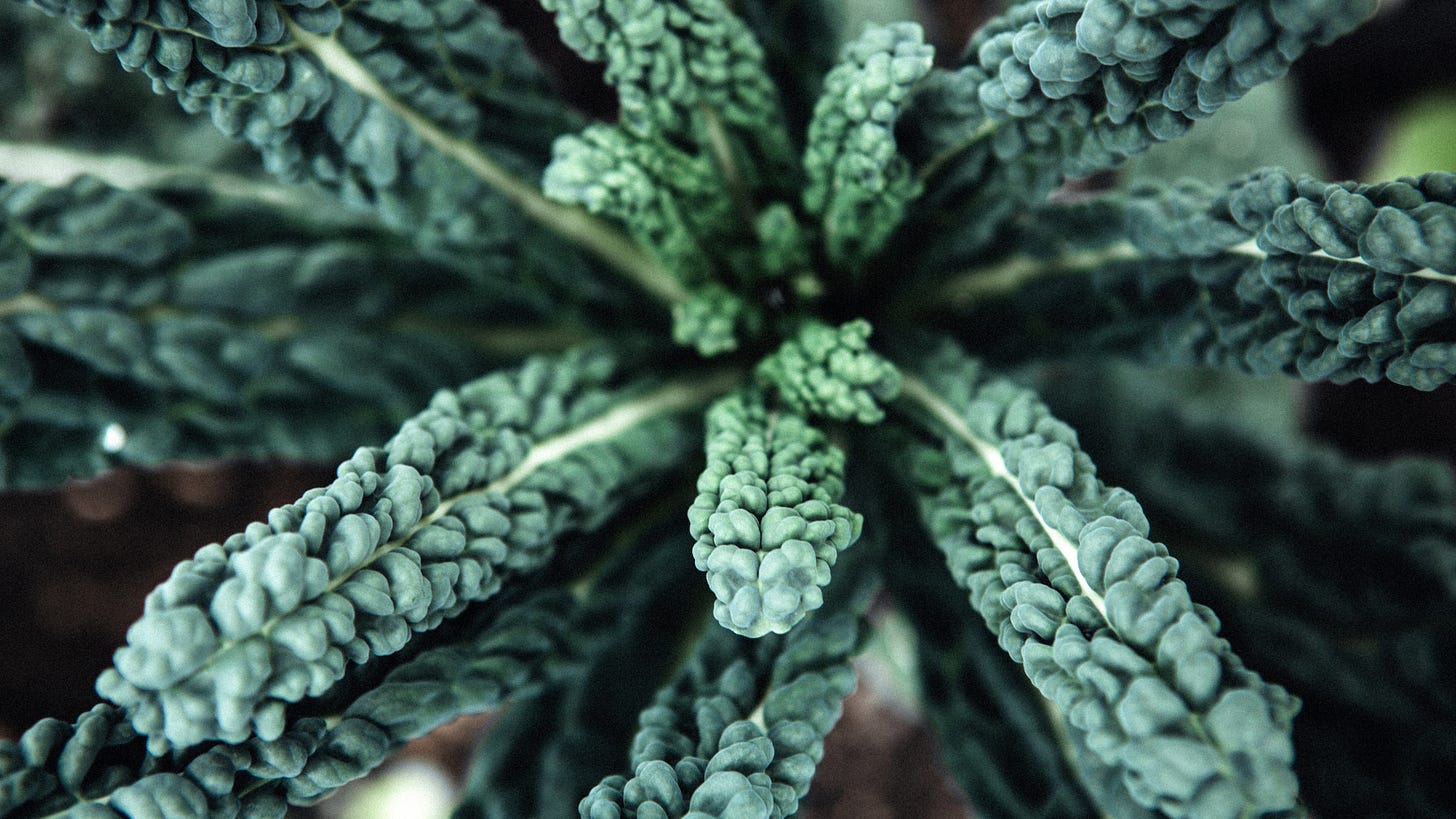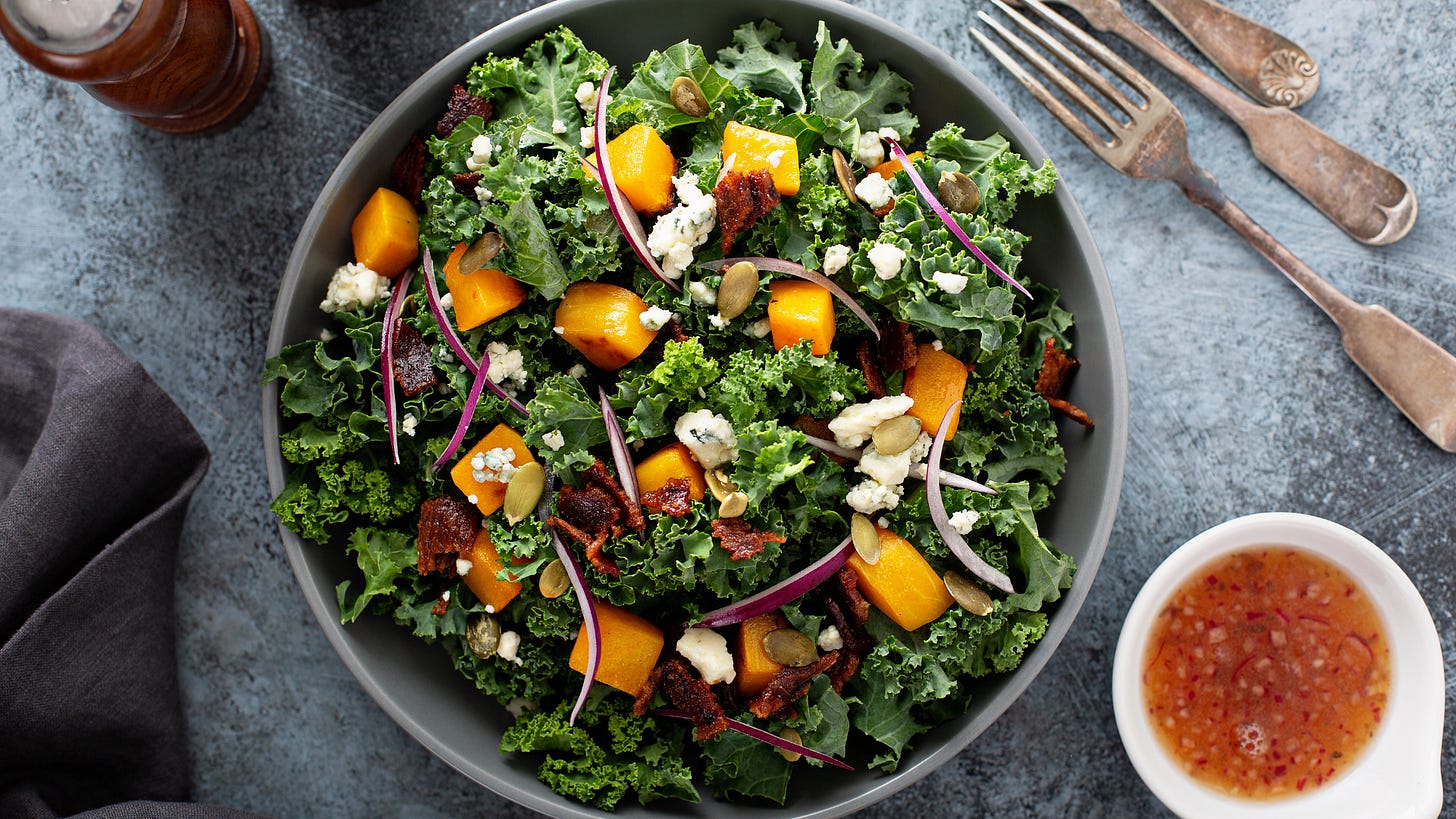Kale Yeah: Why This Winter Green Deserves a Permanent Spot in Your Kitchen
It took Iron Chef Alex Guarnaschelli to change my perspective completely on kale. During a cooking demo at Northeastern University, I watched her transform what was, at the time, just another leafy green in my mind. She demonstrated what seemed like culinary alchemy: massaging chunks of creamy avocado and olive oil into raw kale leaves. As she worked her magic, explaining how this simple process breaks down the tough fibers, making the kale both easier to chew and digest, I could feel my skepticism melting away faster than butter in a hot pan.
That avocado-massaged kale became my favorite blank canvas for kitchen creativity. Got some leftover roasted broccoli? Toss it in. Pickled red onions? Even better. A handful of shaved Parmigiano Reggiano? Now we're really talking.
My Current Go-To Kale Recipe
Speaking of talking, let's fast forward to my current kale obsession – a method so simple yet so satisfying that it's become my go-to side dish. Picture this: shallots and garlic sizzling in olive oil, then add torn kale leaves and let them sauté in the pan until some pieces get delightfully crispy while others soften and steam. A sprinkle of salt, maybe some red pepper flakes if you're feeling spicy, and you've got magic. The best part? Like pizza, it's somehow even better cold the next day.
A Brief History of Your New Favorite Green
Before kale became the poster child for healthy eating (and way before it ended up on every menu), ancient Romans were growing it in their gardens. From Portugal's famous caldo verde soup to traditional European dishes, kale has proven itself both practical and delicious through the centuries.
Why Kale Matters for Sjogren's (And Other Chronic Illnesses)
For those of us with Sjogren's Syndrome, kale isn't just historically significant – it's a nutritional powerhouse. It helps maintain cellular hydration through its mineral content, packs more vitamin C than an orange, and comes loaded with anti-inflammatory antioxidants that help manage autoimmune symptoms.
Know Your Kale
Three main varieties grace our produce aisles, each with its own personality:
Curly Kale:
The most common variety, with those characteristic ruffled edges. Perfect for kale chips, thanks to all those crispy nooks and crannies. Just remember to give those curly leaves a good massage if you're eating them raw.
Lacinato Kale (aka Dinosaur Kale):
The Italian variety, with dark, bumpy leaves that are slightly sweeter and more tender. Perfect for sautéing and particularly great for beginners – this is your starter kale.
Red Russian Kale:
The most tender variety, with purple-tinged stems and flat, toothed leaves. Your best bet for salads and when you need something gentler on your system.
Pro Storage Tip: Treat your kale like a bouquet of flowers – trim the stems, place in water, cover loosely with a plastic bag, and refrigerate. It'll stay fresh for at least a week.
Let's Get Cooking
The Massage Method (for salads):
Strip leaves from stems (or bones as I saw someone call them on Reddit and now will forever refer to them as)
Tear into bite-sized pieces
Add olive oil, salt, and avocado chunks (if you’re lucky enough to get a good avocado)
Massage for 2-3 minutes until leaves darken and soften
The Quick Sauté (for cozy dinners):
Heat olive oil with sliced garlic, add torn kale leaves and a splash of water, cover for 2-3 minutes. Uncover, let water evaporate, finish with salt and lemon. Add red pepper flakes (optional of course) or an acid like lemon juice or apple cider vinegar.
Here's the thing about kale: it's not just another trendy superfood that'll be replaced next week by some exotic berry. If you’re managing a chronic illness — or really, anyone who wants to feel good while eating well — kale is like that dependable friend who shows up with soup when you're sick – except it's the one preventing you from getting sick in the first place.
So next time you're at the grocery store, grab a bunch (or three). Whether you go for the curly kind, the dinosaur variety, or the tender Russian type, you really can't go wrong. Never forget: a little massage goes a long way, don't be shy with the olive oil, and when in doubt, add garlic. Your taste buds – and your body – will thank you.
Now, if you'll excuse me, I have a date with some leftover cold garlicky kale in my fridge. Don't knock it till you've tried it!




